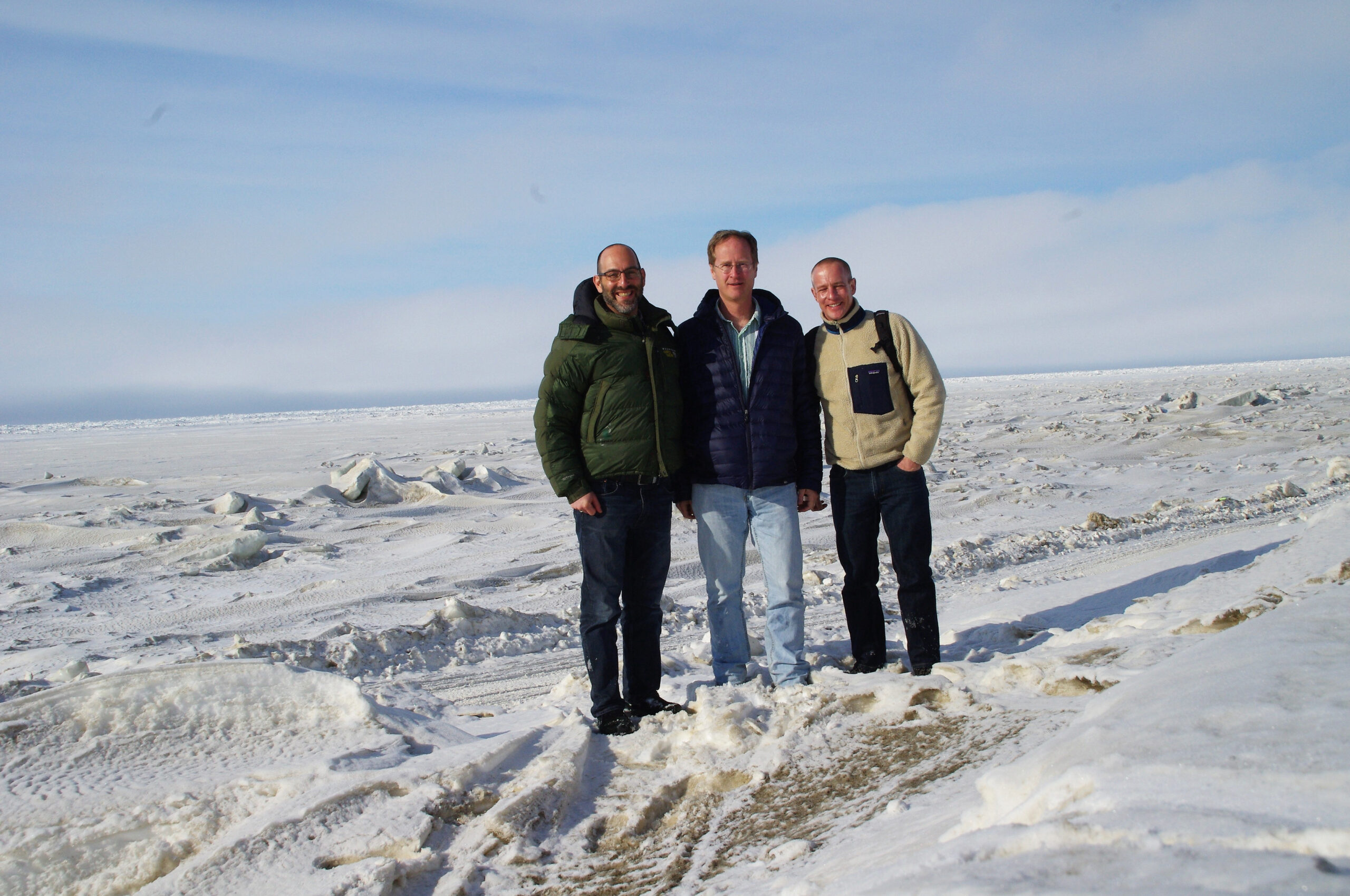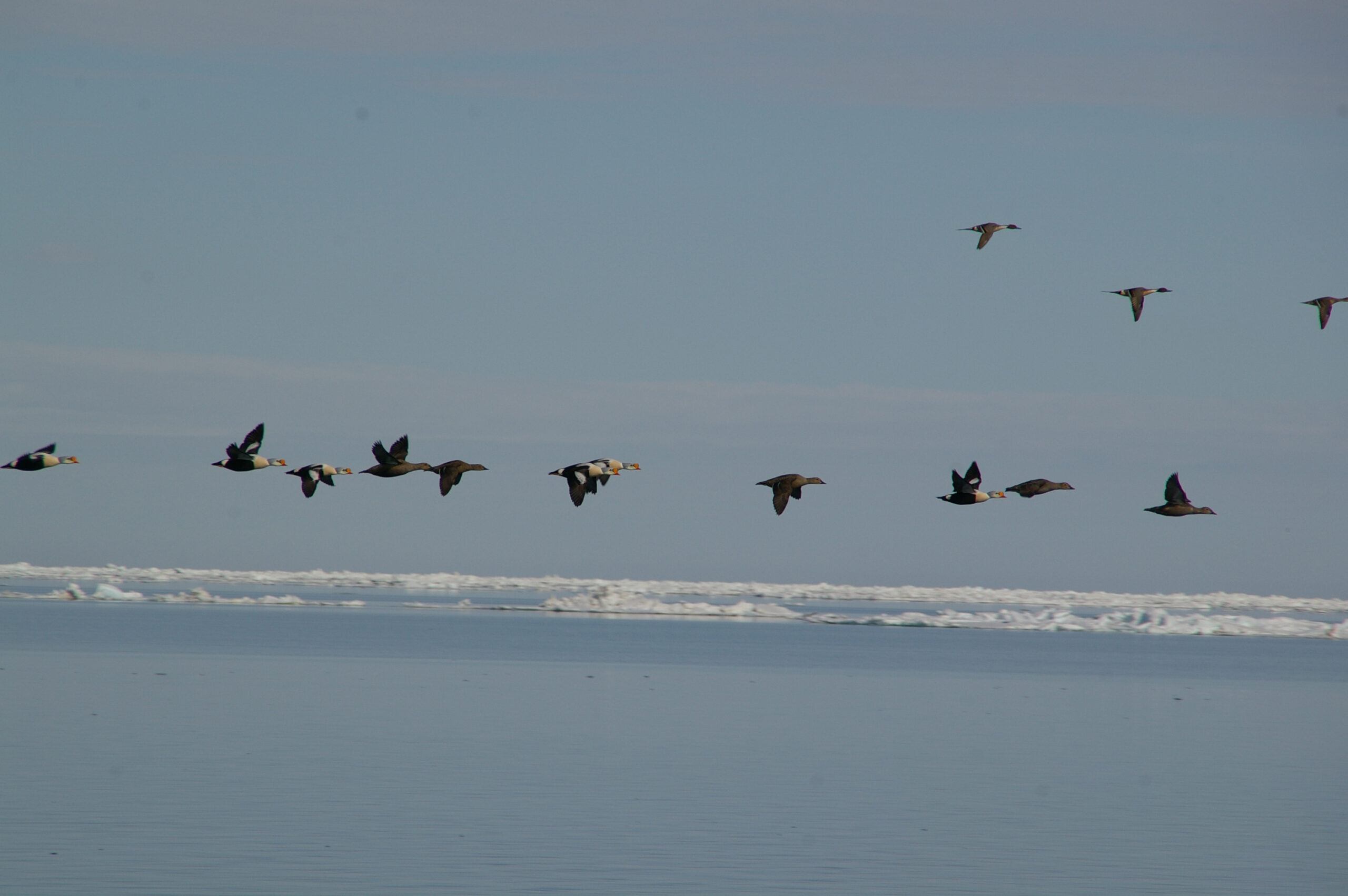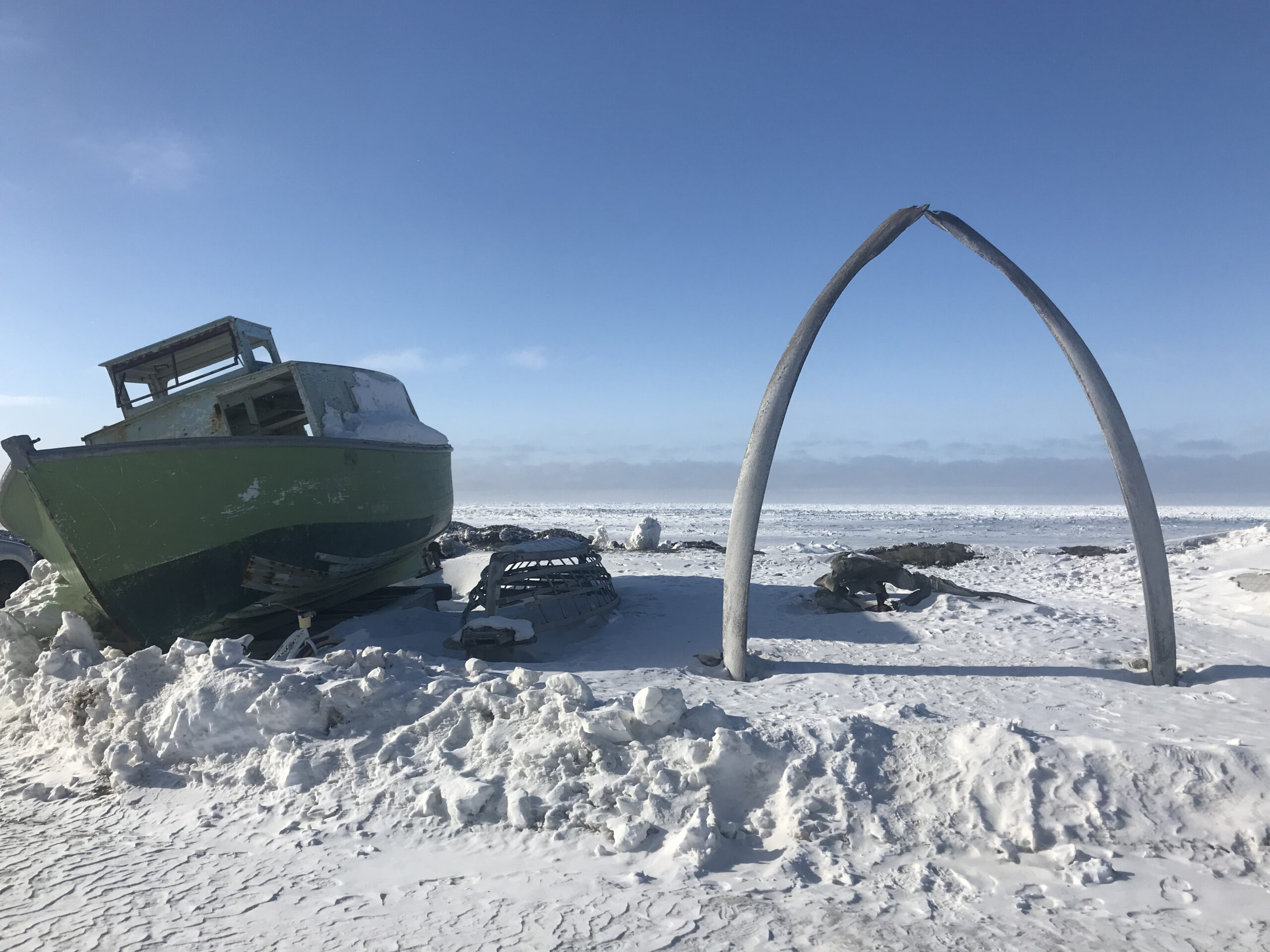Two Lawyers and a Scientist Go to the Arctic
Conversations about the Iñupiat and Arctic waters in Utqiaġvik, Alaska

The foundation for our work in Alaska relies on understanding the people and the environment, and the ways in which both are changing, from legal and scientific perspective as well as local ones. We learn a great deal by listening to those who live in the Arctic, who have observed and depended on ocean resources for millennia, and whose lives are directly affected by decisions about who can do what and where in the Bering, Chukchi and Beaufort seas. With this in mind, Andrew Hartsig (lawyer), Mike LeVine (lawyer), and Henry Huntington (scientist) spent a few days in Utqiaġvik (formerly known as Barrow), the northernmost community in the U.S. and the hub of the North Slope Borough, a county-like government that may be unique in having its own Department of Wildlife Management.
In late April, snow buntings have arrived on the North Slope, heralds of the annual migration of bowhead whales. Utqiaġvik’s whaling crews are heading out on the ice, through rough pressure ridges and across what may be unstable floes, willing to take the risks necessary to provide the traditional food that binds communities here together. The winds are strong, however, so the whaling crews have pulled back towards shore and safer ice, awaiting calmer seas. The pause gives us a chance to catch up with leaders and others in the community, to explain what Ocean Conservancy does, and more importantly to listen.

We hear that the Borough economy is a big concern. Federal funds for many things are scarce, and the State of Alaska is in a budget crisis of its own. The North Slope Borough’s tax base is the oil industry infrastructure surrounding Prudhoe Bay and the network of oilfields stretching east and west along the coast to either side. While less volatile than the price of oil, Borough revenues nonetheless reflect the state of the oil industry.
We also hear concerns about the potential effects of activities in the ocean. We talk about management of shipping and the efforts that have been made in the Bering Strait to route ship traffic away from important areas and how those tools might be used here, in the Chukchi and Beaufort seas. We hear a lot about other changes that people are seeing here—changes in the ice, in permafrost, in the weather.
People along the northern coast depend on a healthy ocean. The meat and maktak (skin and blubber) of the bowhead whale have few contaminants. The whale population is increasing by a few percent a year, thanks to careful management and a general lack of disturbance. But many bowheads bear the scars of entanglements in fishing gear, and some have been struck by propellers. Bowheads respond to noise and smell and other side effects of shipping and drilling, by reducing the number of calls they make and by shifting their swimming routes. If the bowheads are pushed farther offshore or become skittish after encountering a ship or drill rig, the hunt may be harder and more dangerous.

Balancing the desire for a stable economy and the need for a healthy environment is a problem worldwide. Here in the Alaska Arctic, the challenge is particularly stark as many industrial activities create both economic promise and environmental risk. As we discuss this with the people we meet, we hear over and over that people want more and better information so they can made better decisions, and that a strong local role in those decisions is essential both for sensible choices and for local support. The greater use of Indigenous knowledge is a common theme.
As on previous visits here, we are struck by the hospitality and candor of those we meet, from waves and hellos as we walk down the street, to the willingness of so many to take time to talk with us and explain to us how they see their world. We also experience the strange and wonderful coincidences and occurrences that seem standard in Utqiaġvik. At the Wildlife Department, we happen across a local hunter seeking to identify an ancient bone found while digging his ice cellar, a hole in the permafrost that is used as a freezer for meat. A visiting scientist is able to identify it as the top of the humerus of a short-faced bear, an ice-age creature twice the size of today’s bears. We share the awe of holding the bone in our hands. Even the lawyers can appreciate science in this form!